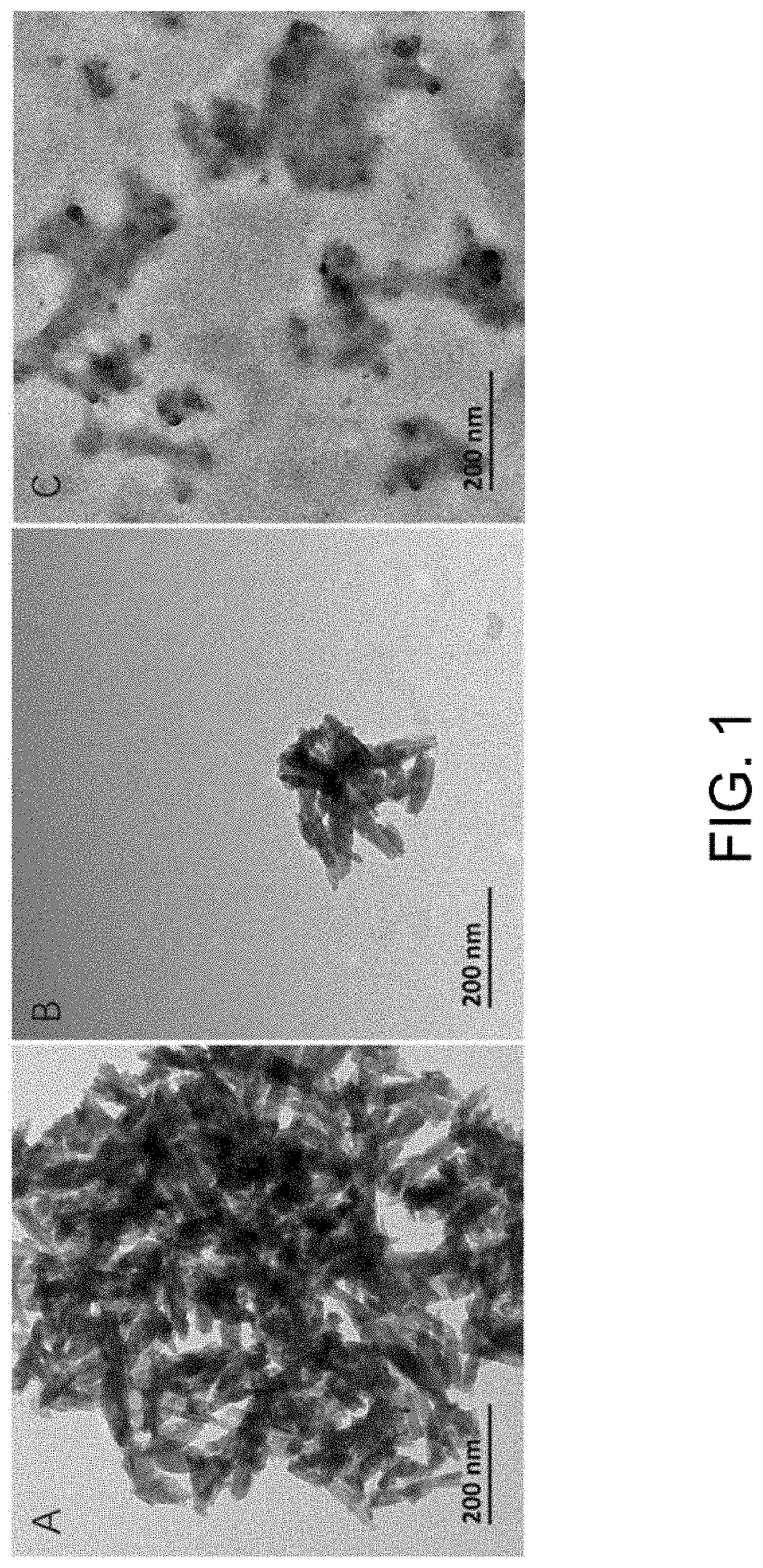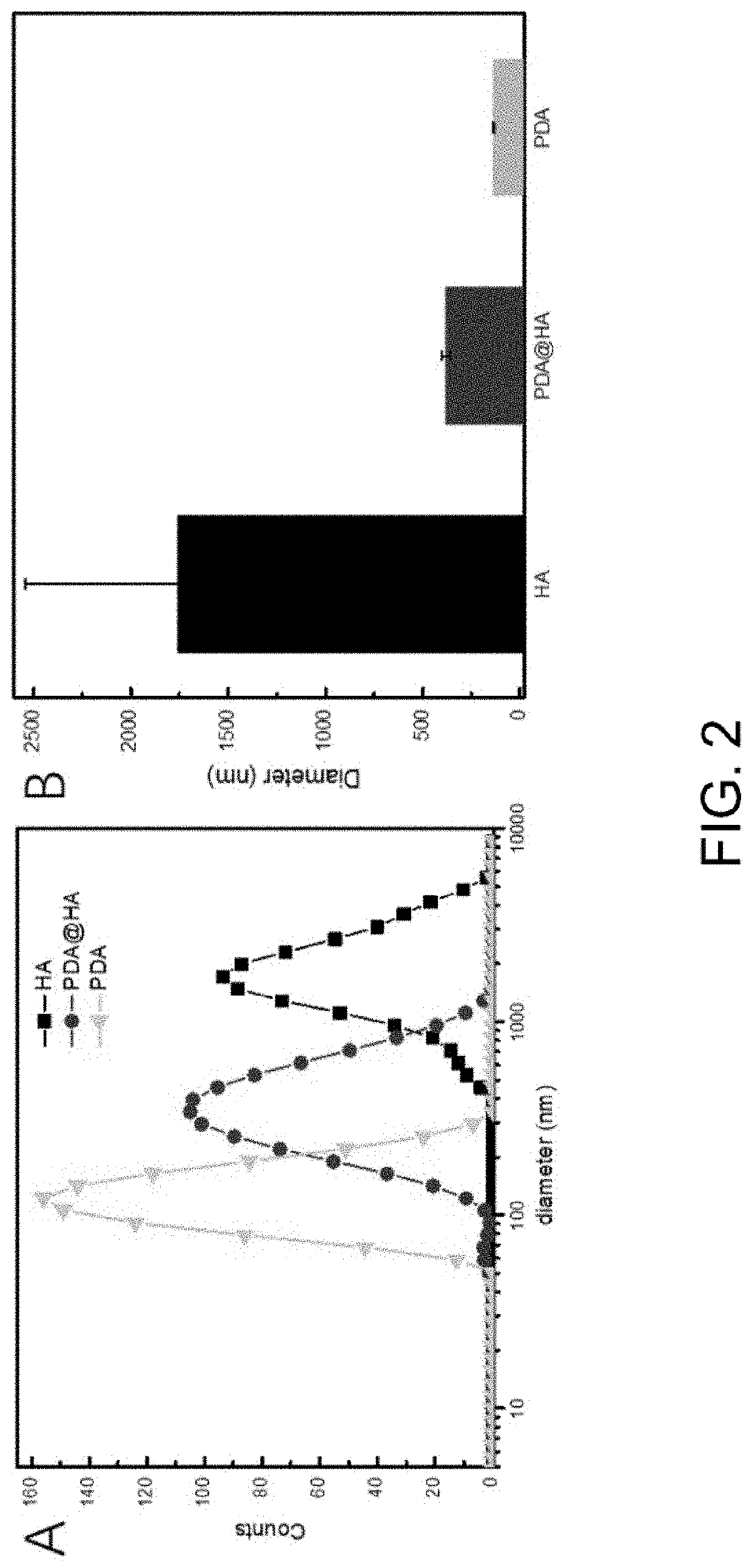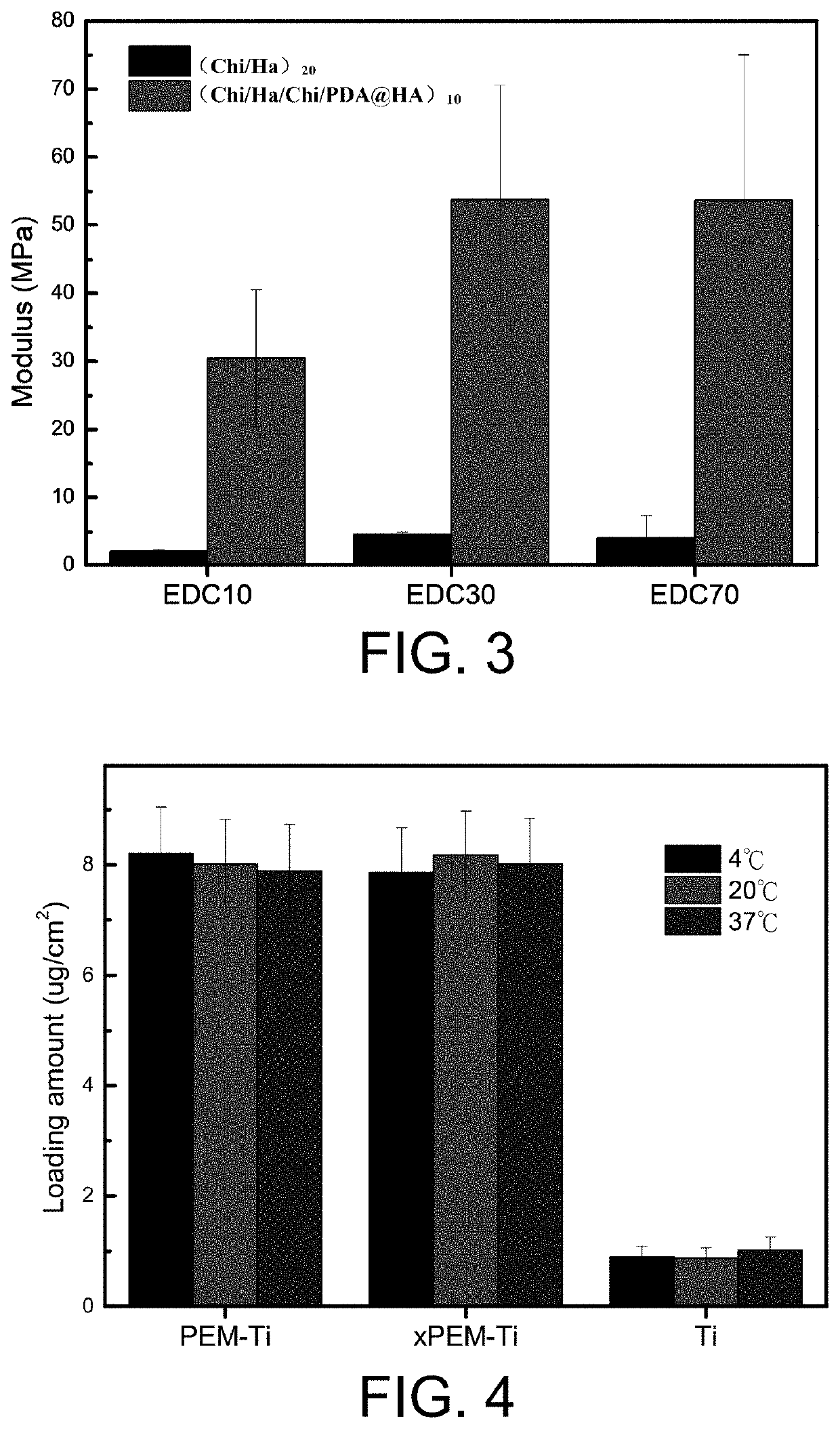Method for constructing bone morphogenetic protein slow-release system
a protein and slow-release technology, applied in the field of protein slow-release system construction, can solve the problems of inability to fully play the inducible activity, impractical and expensive to constantly give the bmp on a large scale, and calcification of tissues that cannot be ossified
- Summary
- Abstract
- Description
- Claims
- Application Information
AI Technical Summary
Benefits of technology
Problems solved by technology
Method used
Image
Examples
embodiment 1
[0050]Step I: a titanium material was activated. The titanium material was washed and dried, and then was soaked into a Tris-HCl buffer solution containing dopamine with a concentration of 1 mg / mL and a pH value of 8.5 to react for 48 hours to obtain a PDA-modified Ti base material.
[0051]Step II: ceramic powder is activated. The ceramic powder and dopamine were weighed in a weight ratio of 10:1, were dissolved into the Tris-HCl buffer solution, were vibrated for several minutes in an ultrasonic pulverizer to disperse ceramic particles, were reacted for 48 hours under stirring, and were centrifuged to remove large particles, so that a PDA@HA solution was obtained.
[0052]Step III: a multilayer film was constructed. The PAD-modified Ti base material was sequentially soaked in a solution with a chitosan concentration of 1 mg / mL, a solution with a hyaluronic acid concentration of 1 mg / mL, a solution with a chitosan concentration of 1 mg / mL and a solution with a PDA@HA concentration of 1 m...
embodiment 2
[0054]Further, (Chi / Ha / Chi / PDA@HA)10 multilayer film obtained in Embodiment 1 was strengthened and was soaked into a cross-linking solution containing carbodiimide (EDC) and thiosuccimide (sNHS) to stay overnight, where the concentration of the EDC was 30 mg / mL, and the concentration of the sNHS was 11 mg / mL. Then, the multilayer film was sufficiently washed with water and dried to obtain a cross-linked (Chi / Ha / Chi / PDA@HA)10 multilayer film.
embodiment 3
[0055]Further, the cross-linked (Chi / Ha / Chi / PDA@HA)10 multilayer film obtained in Embodiment 2 was loaded with the bone morphogenetic protein as follows: the crossed-linked (Chi / Ha / Chi / PDA@HA)10 multilayer film was soaked into a bone morphogenetic protein-2 (BMP-2) solution with a concentration of 20 ug / mL and a pH value of 3.0 to load to finally obtain a slow-release system loaded with the BMP-2: Ti+PEM+BMP-2.
PUM
| Property | Measurement | Unit |
|---|---|---|
| mass concentration | aaaaa | aaaaa |
| mass concentration | aaaaa | aaaaa |
| concentrations | aaaaa | aaaaa |
Abstract
Description
Claims
Application Information
 Login to View More
Login to View More - R&D
- Intellectual Property
- Life Sciences
- Materials
- Tech Scout
- Unparalleled Data Quality
- Higher Quality Content
- 60% Fewer Hallucinations
Browse by: Latest US Patents, China's latest patents, Technical Efficacy Thesaurus, Application Domain, Technology Topic, Popular Technical Reports.
© 2025 PatSnap. All rights reserved.Legal|Privacy policy|Modern Slavery Act Transparency Statement|Sitemap|About US| Contact US: help@patsnap.com



